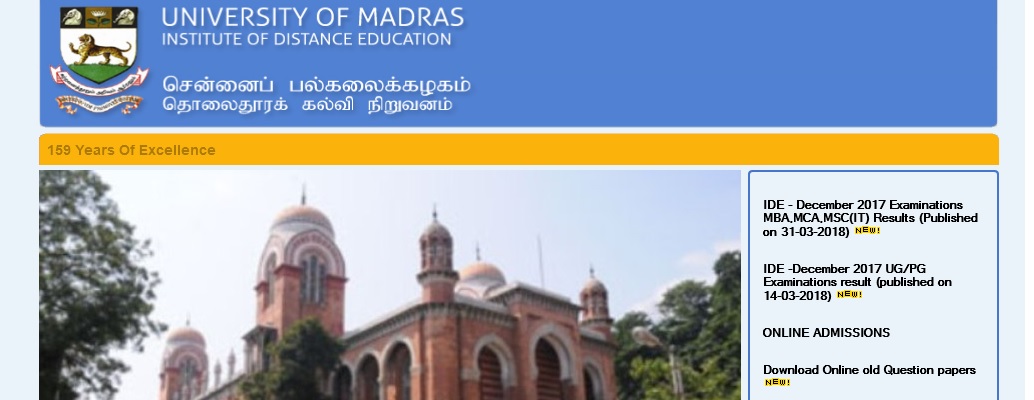PAU Real & Complex Analysis B.Sc Question Paper : ideunom.ac.in
University : University of Madras
Degree : B.Sc
Department :Mathematics
Subject :PAU Real & Complex Analysis
Document type : Question Paper
Website : ideunom.ac.in
Download Previous/ Old Question Paper :
OCT 2011 : https://www.pdfquestion.in/uploads/ideunom.ac.in/6856-._QBNEW_uid4722%20PAU.pdf
OCT 2012 : https://www.pdfquestion.in/uploads/ideunom.ac.in/6856-._DEC12_uid4722%20PAU.pdf
May 2012 : https://www.pdfquestion.in/uploads/ideunom.ac.in/6856-m12._QBNEW1_uid4722%20PAU.pdf
May 2013 : https://www.pdfquestion.in/uploads/ideunom.ac.in/6856-._MAY2013_PID%2029-PAU.pdf
IDEUNOM PAU Real & Complex Analysis Model Paper
U/ID 4722/PAU
Time : Three hours
Maximum : 100 marks
Related / Similar Question Paper : IDEUNOM B.Sc UCME Algebraic Structures Question Paper
OCTOBER 2011
SECTION A — (10 × 2 = 20 marks)
Answer ALL questions.
Each question carries 2 marks.
1. Define a set. If f : A ® B X Ì A,Y Ì A state the values of f (X ÈY ), f (X ÇY ) .
2. Define limit of a function at a point.
3. Define closed set in a metric space.
4. Define upper sum of f in [a,b].
5. Show that f (z) = z is nowhere differentiable.
6. Give an example to show that continuity of a function at a point does not imply the existence of derivative at that point.
7. Define bilinear transformation.
8. Define conformal mapping.
9. Define pole. Find the pole of 1-ez/z3
10. Find the residues of at its poles.

SECTION B — (5 ´ 16 = 80 marks)
Answer ALL questions.
Each questions carries 16 marks.
11. (a) Show that sin(1/ x) does not approach a limit s x ®0 .
(b) If the real valued functions f and g are continuous at aÎR prove that f + g, f – g are also continuous at a.
Or
(c) Let (M,S) be a metric space and let a be a point in M. Let f and g be real valued functions whose domains are subsets of M lim ( ) and g x N
(d) Let ( , ) 1 1 M S , ( , ) 2 2 M S , ( , ) 3 3 M S be metric spaces and let 1 2 f : M ® M 2 3 g : M ® M . If fis continuous at 1 aÎM and g is continuous at 2 f (a)ÎM then prove that g o f is continuous at a.
12. (a) Define open set in a metric space.If 1 G and 2 G are open subsets of the metric space M , prove that 1 2 G ÇG is also open.
(b) Let f be a continuous read-valued function on the closed bounded interval [a,b]. If the
maximum value for f is attained at c where a < c < b and if f ¢(c) exists then prove that f ¢(c) = 0.
Or
(c) Suppose f has a derivative at c and that g has a derivative at f (c) . Then prove that
f = g o f has a derivative at c and prove that f ¢(c) = g¢( f (c)).f ¢(c) .
(d) If f ÎR[a,b] and l is any real number, show that l f ÎR[a,b] and prove that ? = ?
13. (a) Show that 2 f (z) =|z| is differentiable at z = 0 but not analytic
(b) Derive Cauchy-Riemann equation in polar coordinates.
Or
(c) State and prove sufficient condition for a function to be analytic.
(d) If a function f (z) = u + iv is analytic in a domain D then prove that u and v are
harmonic in D
14. (a) Find the image of 1< x < 2 under the transformation w=1/z
(b) Find the bilinear transformation which maps z = z = i z = – respectively onto
, 0 1 2 w = i w = w = -i 3 .
Or
(c) Discuss the salient features of transformation 2 w = z .
15. (a) State and prove Cauchy’s integral formula.
(b) Find the image of 1< x < 2 under the transformation w=1/z
Or
(c) Find the Taylor’s series expansion about z = 0 of ( 1) ( 3)
(d) State and prove Cauchy’s residue theorem. (C) z = 0
OCTOBER 2012
U/ID 4722/PAU
Time : Three hours
Maximum : 100 marks
SECTION A — (10 ´ 2 = 20 marks)
Answer ALL questions.
Each question carries 2 marks :
1. Define metric space.
2. Define characteristic function.
3. Define a dense set in a metric space.
4. State Rolle’s theorem.
5. Prove that u y x y 3 2 = – 3 is a harmonic function.
6. State the necessary condition for f (z) to be analytic function.
7. Define bilinear transformation.
8. State Cauchy-Goursat theorem.
SECTION B : (5 ´ 16 = 80 marks)
Answer ALL questions.
Each question carries 16 marks :
11. (a) Prove that countable union of countable sets is countable.
12. (a) Let G be an open subset of the metric space M . Prove that M -G is closed.
13. (a) If f (z) = u + iv is an analytic function then prove that polar form of the Cauchy- Riemann equations are r v ur = q and r uq = -rv .
If anyone having this book?
Please post more questions to download.